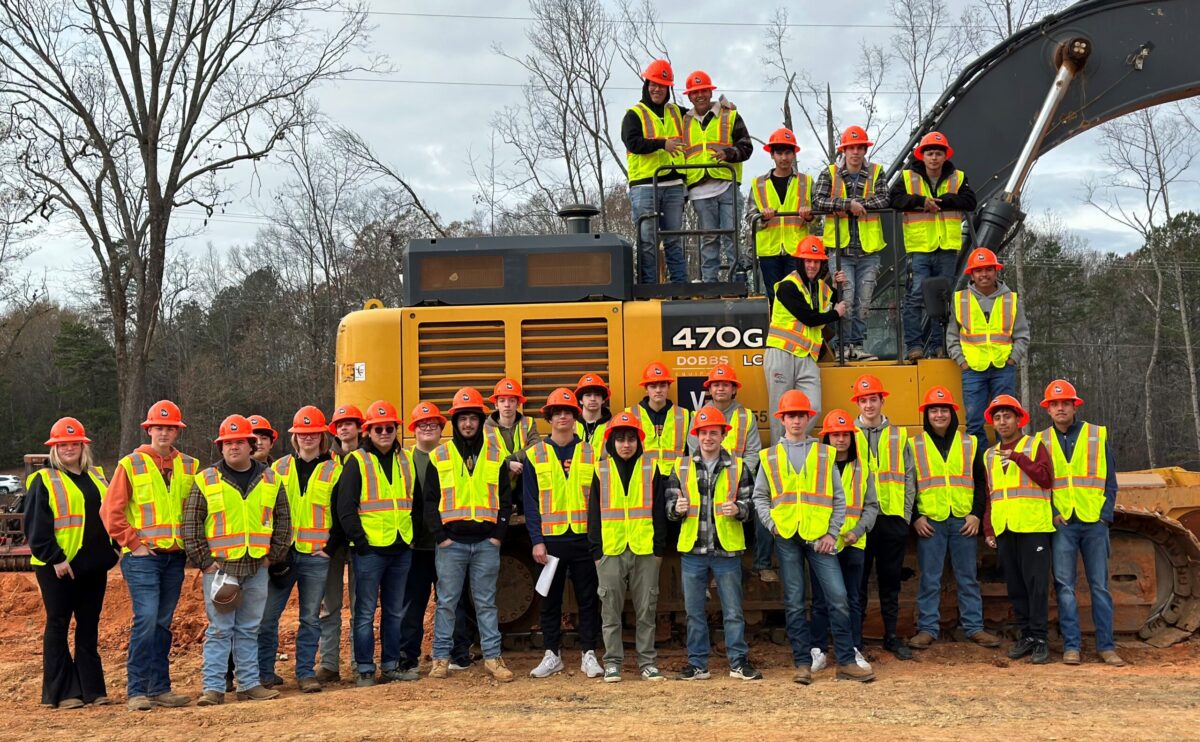
by Brian McGarity, Northeast Florida division manager for Superior Construction
Much like a weather-worn, overloaded and aging superstructure, the construction industry would collapse without the innovative technologies sustaining it.
In recent years, the equipment that contractors use to build our nation’s infrastructure has significantly benefited from rapid advancements in artificial intelligence (AI), 3D printing, augmented and virtual reality, building information modeling (BIM), construction robotics, and other technologies, as have the materials procured for each project.
Construction companies increasingly utilize these innovations to improve efficiency, durability, sustainability, and profitability. In some cases, they can even help contractors protect their most valuable resource—their workforce.
Prioritizing Safety
Construction recorded the most deadly workplace injuries of any industry in 2022, according to the United States Bureau of Labor Statistics.
Maintaining a reputation as a heavy civil construction safety leader is crucial to business development and a moral imperative. Contractors can leverage technology to proactively address safety hazards, reduce risk, and improve safety metrics.
Work zone crashes account for a large percentage of construction workplace deaths. One way to mitigate this risk in high-traffic areas is to employ newer traffic management systems like Lindsay’s moveable barrier wall, the Road Zipper System®, which Superior used to complete the Indiana Department of Transportation’s R-43062 (I-80/94) preventative maintenance pavement restoration project. It was the first time a contractor in that region had employed the system.
Also known as the Borman Expressway, I-80/94 is one of Northwest Indiana’s deadliest roads, claiming 71 lives on the Lake County stretch and another 19 in Porter County between 2006 and 2018, according to the NWI Times.
The project team utilized the Road Zipper System® to reconfigure the expressway in real-time, opening the maximum number of lanes for peak traffic periods and providing workers and motorists with the security of high-level positive barrier separation at all times. However, employing these newer systems requires flexibility and rigorous training.
“We had to maintain four lanes of traffic at all times and adhere to stringent overnight restrictions, which meant our team could only work between 9 p.m. and 3 a.m.,” said Superior Mid-South Division Manager Tim Koster. “That gave crews six hours to stage 16 miles of barrier walls, mill, clean and sandblast pavement patches, pour and cure the new concrete, and remove the barrier walls, or we would incur substantial fines.”
To ensure someone was always available to operate the barrier transfer machine, Koster had Lindsay host a training session for his team. Two operators are needed to run the machine; both must wear headsets and communicate as they drive simultaneously. The manufacturer taught 30 operators and laborers how to perform this complicated task safely and efficiently.
The project team executed this strategy during its overnight shifts, effectively patching 10,000 square yards of pavement without a single recordable safety incident.
Construction Robotics
Construction robotics allow companies to automate tasks that can be tedious, like rebar ironwork, thereby reducing ergonomic stressors.
Superior utilized Advanced Construction Robotics’s TyBOT system to minimize the risk of back injuries on its multi-award-winning Wekiva Parkway Section 6 project in Sorrento, Fla.—the state’s first major use of that particular technology.
Manually tying rebar requires fast, repetitive and forceful motions and can compromise ironworkers’ posture. It also requires laborers to work in elevated areas for extended periods, which can be hazardous.
The TyBOT system uses lasers and cameras to reinforce steel tie connections, speeding up production and reducing the likelihood of injuries from a fall or straining one’s back.
Despite how far this emerging technology has come in the last decade, there is still much room for growth and improvement. Cost and machinery durability are two significant roadblocks to widespread robotics applications.
Robotics is currently more prominent in building construction, where tools like the Baubot MRS12 and Hilti’s JaiBot can perform laser leveling, bricklaying, milling, sanding, site monitoring, and 3D printing and reinforcement. Highway construction requires more robust all-terrain robots that can withstand the rugged elements craft laborers endure.
Some existing products highway contractors can use provide three-dimensional jobsite scanning using AI. For instance, ULC Robotics and SGN’s Robotic Roadworks and Excavation System (RRES) contains utility mapping technology that can improve excavation by identifying and locating exposed assets.
Meanwhile, Built Robotics manufactures AI-autonomous construction equipment to replace traditional pile driving methods. However, many available robots still require an operator and are not cost-effective, particularly for smaller companies.
Current technological limitations may stall the digital transformation, but they likely will not obstruct the industry’s automation trajectory and future implementation of smart technologies.
Ultra-High Performance Concrete
In recent years, there has been a remarkable surge in construction material advancements, with one standout innovation being ultra-high performance concrete (UHPC), a highly optimized class of materials with higher durability and increased strength properties compared to conventional concrete.
“UHPC-class materials do not use coarse aggregate; instead, they contain non-organic fine materials, sized with a modified particle packing and mixed with a low water-to-binder content, which provides a low permeability matrix,” said Anthony Ragosta, P.E., director of engineering and operations at ceEntek North America.
UHPC increases abrasion resistance, is castable, self-consolidating, and can withstand ultimate capacities of 21,000 pounds per square inch (psi). Its high content of discrete fibers provides additional strength and serviceability even after it cracks, meaning it maintains a structure’s load-carrying capacity.
Another benefit of using UHPC is its decreased rebar development length and rapid cure times. Superior Construction is currently using UHPC on its Arlington Expressway bridge remediation project in Jacksonville, Fla., and has used it on three projects along I-10 in the Florida Panhandle.
In each case, the UHPC was used to interconnect existing precast bridge slab panels, and the bridge plan required the concrete to reach an ultimate capacity of 21,000 psi.
“We reached 15,500 psi within 24 hours,” said Arlington Expressway Assistant Project Manager Jenny Ferman.
A major challenge contractors often contend with when using conventional concrete is gaining sufficient capacity in time to release traffic onto freshly poured concrete to minimize travel disruptions.
“A conventional concrete might take 28 days to reach 9,000 psi strength. UHPC can reach that strength in 10 to 14 hours,” said Superior Assistant Project Manager Aaron Kidd, who employed the material on the company’s I-10 projects in Florida.
UHPC also possesses substantial environmental benefits since it extends a bridge’s service life, stretching the existing embodied carbon and minimizing the emissions associated with construction maintenance. There are some challenges to working with UHPC, including cost and a learning curve for first-time users.
“If you misplace it or it doesn’t hit the strength you want because it was mixed incorrectly, it’s much more difficult to remove,” said Ferman.
A cubic yard of concrete averages $100-200. UHPC costs $3,000 per cubic yard on average. However, most UHPC vendors provide on-site training to avoid costly mistakes.
Construction Data
Automated data collection is transforming the industry. The Florida Department of Transportation (FDOT) recently built the only full-scale concrete testing facility in the Southeastern United States—the U.S. 301 Concrete Test Road, a field laboratory testing concrete pavement and base designs under live traffic loads.
Composed of 52 experimental concrete pavement sections, the project utilizes innovative technologies to collect real-time data on the efficacy of various concrete types, thicknesses and base types available for use on Florida roads. These concurrent experiments examine the roads’ structural integrity, drainage and calibrate road fatigue and cracking.
To complete the project, Superior Construction poured 36,500 square yards of concrete pavement, embedding it with advanced instrumentation, including strain gauges, thermocouples and moisture gauges to monitor the road conditions continually. The data FDOT collects will inform future projects and help the state create resilient transportation corridors.
“The more resilient the materials we use, the longer they last, reducing our maintenance costs and construction times, limiting the congestion travelers feel in active work zones,” said FDOT Secretary Jared W. Perdue, P.E., when the project was first announced.
Driving the Industry Forward
Ongoing research and development efforts will further refine construction innovations, making them more sustainable, cost-effective and globally accessible. These emerging technologies are poised to revolutionize construction methodology, whether or not contractors are prepared. While innovation comes with learning curves and iterations, early adopters will set themselves apart from competitors and redefine what is possible in the heavy civil industry.
Above photo: A portion of the Wekiva Parkway Section 6 in Florida was completed using the TyBOT system to reinforce steel connections. The design-build team’s choice of a segmental bridge eliminated work in water and protected the environment using top-down balanced cantilever construction. Photo courtesy of Superior Construction.
Topic
Members, Technology
Post Type
Transportation Builder Magazine
Related News

A Better Way for the Rubber to Meet the Road
by John Schneidawind, vice president of public affairs, ARTBA Each day on major…

Building a New Generation of Skilled Highway Workers in Georgia
Photo courtesy of Georgia Highway Contractors Association by Abby Porter, marketing and engagement…

Why AI is Essential to the Future of Heavy Construction
by Kishan Patel, HCSS vice president of product One of the brightest minds…
